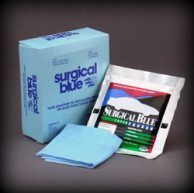

(This is also what makes it feel stickier in your hands the blu-tack flowing into all the tiny crevices of your skin). Once a tight seal between the blu-tack and wall has been formed, lots and lots of tiny but weak van der Waals forces are able to hold the blu-tack up. In free-flowing form, blu-tack spreads thinly and seeps into all the microscopic indents of a wall, forming a vacuum. This is because they stay rigid when left to their own devices, but flow like liquids when they are pressed onto a wall or warmed up to body temperature. Non-reactive, pressure-sensitive adhesives on the other hand, like blu-tack and the glue on the back of a post-it note, stick to surfaces when pressure or heat are applied, but can be pulled free once that force is removed.

So why does blu-tack get blu-tackier as we handle it, and how does it stick reversibly without feeling that sticky? Structural adhesives like superglue form an irreversible bond with a surface once they have hardened. This is a reminder of how blu-tack gets more liquid the more we knead and warm it, eventually becoming stringy, fibrous and fragmented ‘putty in our hands’. If you look closely at the image on the link, you can see the imprint of Creed’s thumb in the powder blue blob. 79: ‘some blu-tack kneaded, rolled into a ball and depressed against a wall’. Artist Martin Creed’s 2001 Turner Prize-winning show famously featured Work No.

In celebrating this modest and mundane material it seems we are in good company. Following on from last week’s tour of tarmac, let’s stick (ha!) with another adhesive substance: that staple of the home office, blu-tack.


 0 kommentar(er)
0 kommentar(er)
